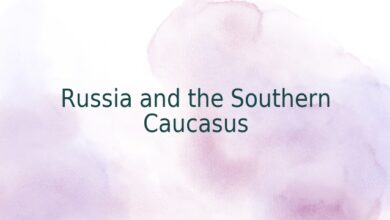
A Concise History of the Holy Apostolic Church of Georgia / The Church of Georgia in The Third Period / The 19th -20th cc.
Two most critical periods of the 2000-year-old history of the Apostolic Church of Georgia are to be attributed to the 19th- 20th centuries. They were the abolition of its autocephaly by the Russian royal court and its restoration, gained by the striving of the Georgian nation and clergy. Plethora of publications speaks about the deplorable circumstances in which the Church of Georgia had to continue life in the 19th century. After the Apostles had established her and had preached to the people, Christianity became the Georgians’ national religion and remained as such throughout centuries.
Starting from the year 1811, this Church, the stronghold of Christianity for the entire Caucasus, was transformed into an additional part of the Russian bureaucracy. Before Russia’s presence in Georgia, the Church had been an owner of immense property. She had been an economically independent institution by which she was profoundly different from the Russian Church. The latter had been modified into part of the state by Russian political authorities and since 1722 had been ruled by an attorney-general who was head of the Synod. He was a lay statesman and a wide scope of rights was vested in his hands. Peter the Great had abolished the Patriarchal guidance of the Church and had initiated her subordination to lay authorities; the process was accomplished by Queen Katherine II. Under these circumstances Russia would not admit the economical independence of the Georgian Church or her solid influence on the lay authorities. This purpose directed her to the reorganization of the Church of Georgia.
On March 3rd, 1810 Catholicos Anton II was almost induced to leave Georgia and depart to Russia. On July 30th, 1811 a dicastery was formed; the Church of Georgia was deprived of her autocephaly. Varlam Eristavi was appointed head of the dicastery and the title of ?exarch? was conferred on him. Most difficult times started in the life of Georgia as the Russian authorities commenced on restricting eparchies. It was not a newly begun business and was aimed at dismissing those personalities from around the Cathedral who were unacceptable for the Russian authorities.
On August 30th, 1815 the dicastery was transformed into the ?department of Synod of Georgia-Imereti? to which the Russian government subordinated the churches of Guria and Samegrelo also.
Varlam Eristavi was called to Russia in 1817. In the same year, Archbishop Theophilactos Rusanov from Ryazan was appointed exarch and was sent to Georgia. Since then the Church was only ruled by Russian bishops. In 1819 Theophilactos united the bishoprics of Imereti by means of restricting them in number. Guria and Samegrelo were allowed to have one diocese each. Out of twelve eparchies, only three were maintained in West Georgia. Along with it, the exarch reduced the number of churches.
The Russian governing authorities saw the Church of Georgia as another source of income. They considered it profitable to reduce the number of clergy and to cut the overall expenditure since it would help increase the income in the exchequer.
Russia’s policy raised anger in the Georgian people and a rebellion for the defense of the Mother Church started in 1818. The rebels fought under the slogan ?The Liberation of the Motherland?. Every social layer of people was involved in the fight against the regiments and detachments, well armed with artillery.
In 1820 Metropolitan Dositheos of Kutaisi, Metropolitan Ekvtime of Gelati and other prominent people were arrested. This arrest enhanced the vigor of the struggle.
Metropolitan Dositheos of Kutaisi (Tsereteli) was an old man. He was put in a sack and taken in the direction of Russia but in the vicinity of the town of Gory was beaten to death in the same sack. Metropolitan Ekvtime of Gelati (Shervashidze) was arrested as one of the leaders of the revolt.
Metropolitans and bishops, in general, had been inviolable and even respected by the Muslims. The Russians’ actions aroused a fierce anger in the rebels and at the end of ferocious battles the Russian army gained a Pyrrhic victory. The region of Racha was burnt and devastated, the fortress of Shemokmedi in Guria was razed to the ground, villages were burnt, rebels were hung; many of them sustained the forfeiture of property and were exiled to Russia their possessions being taken over by the exchequer.
On May 21st 1820, 2000 Georgian warriors laid their lives for the faith and freedom. Among them were priests, monks and other members of the clergy.
The Church of Georgia had had tens of bishoprics and eparchies in East, West and South Georgia. With their abolition, the Christian faith decreased among the people. The clergymen unceasingly demanded the restoration of the abolished eparchies.
The exarch’s policy impaired the image of the Church of Georgia and brought about indifference towards the faith among the parish. Particularly outrageous was the restriction of the Georgian language in churches and at schools. Georgian theological schools were closed and Russian ones were opened. This resulted in the lack of knowledge among new clergymen. Abandoning the Georgian language, part of the youth plunged in the Russian and the European ideas of socialism, atheism and anarchy.
The Church possessions of valuable gold and silver objects, embellished with precious stones and preserved for many centuries, were lost. The exchequer took possession of the lands of the Church.
It is no surprise that under such circumstances the Georgian clergymen took an active part in the rebellions of the years 1804 and 1812 and the others of the following period which aimed at the liberation of Georgia. One of the leaders of the resistance in the revolt of 1832 was Archimandrite Philadelphos Kiknadze.
Under Exarch Paul Lebedyev, in 1826 one of the expelled students Joseph Laghiashvili killed the Rector of the seminary Archpriest Chudetski. At his funeral, the exarch pronounced a eulogy which contained a curse of the people whom the student belonged to. The statesman Dimitri Kipiani expressed the irate Georgians’ attitude towards it. He addressed to the exarch with a suggestion that if the curse which had been spread among the people was true, ?the curser was to depart from the accursed land?. Dimitri Kipiani was punished for these words by being exiled where later in 1887 he was killed.
The best sons of the Russian people raised their voice against the oppression of the Georgian Church. One of such defenders was the well-known scholar Slavophil Nicholai Durnov. He described the deplorable conditions of the Church of Georgia in his assay ?The Fate of the Church of Georgia?.
Regrettably, in the 19th century, while Georgia was part of the Russian Empire, the fervent faith of the nation weakened. In the 20th century, the disintegration of the empire started and the same process also gained ground in the life of the Church. The sustenance of the empire required the alteration of its society. A population of one religion, speaking one language and devoted to the country, would save it. Thus the primary issue on the agenda was the assimilation of the Georgian people as well as of the other peoples by making them mingle with the Russians. The Georgian language was severely persecuted. The exarch’s strife was targeted at the subjection of the parish to the Russian way of life. But, the Georgians rendered a relevant answer to his policy.
In 1908 Exarch Nikon was killed. The Russian hierarchs called Georgia ?wild and ruthless land? and the newly appointed would shun coming here.
The Georgian Church Fathers and the best sons of the nation saw their path leading to the deliverance of the faith as the one which lay through striving for the independence of the Church of Georgia from the Russian Empire, in other words – through the restoration of her autocephaly.
The proposal for restoration was strongly supported by the Georgian statesmen: St. Ilia the Righteous (Chavchavadze), St. Ekvtime the Man of God (Takaishvili), Alexander Tsagareli, Alexander Khakhanashvili, Nicholas Marr and others. Two Russian scholars, Solovjov and Zaozersky also advocated the cause.
After the assassination of Ilia the Righteous and the rise of regressive forces in the country, the adherents of autocephaly turned to the inculcation of their ideas in people by publishing books for they considered the independence of the Church would be the foundation for Georgia’s future independence. On March 12th 1977, tens of thousands of faithful people assembled at the Holy Liturgy in Mtskheta. Bishop Leonid (Okropiridze) briefly interrupted the liturgy and made a speech in which the autocephaly of the Georgian Church was declared restored. In the same year, on September 17th Bishop Kirion (Sadzaglishvili) was elected Catholicos-Patriarch of the Georgian Church. On May 26th 1918, Georgia was declared an independent state. Sadly, the power of governing authority was not vested in the National Party but in the Socialist. On June 27th 1918, St. Kirion was killed in the village of Martkhopi.
The Socialists’ government failed to see in proper perspective the significance of the Church in the people’s life. All this was a matter of serious concern to the Catholicos-Patriarch Leonid.
The Mensheviks failed to discern an imminent danger emerging from Russia’s political unrest and in 1921 the latter, making use of this failure, conquered the country once again.
In the same year, after the death of Patriarch Leonid, the Church Council elected St. Ambrosi (Khelaia) to the Throne of the Catholicos-Patriarch.
The Bolshevik Russia, having annexed Georgia, took steady and drastic measures against the Church, targeted at her complete destruction. The Christians had to endure multiple persecutions but none can be compared with the ruthlessness of the one which the Communists conducted in the 20s and 30s of the 20th centuries. They destroyed churches, tortured clergymen, put pressure on them, robbed churches and monasteries.
In the 20s of the 20th century more than thousand churches were closed, the service was cancelled.
Precisely, that persecution was the wave which aroused anger of the Catholicos-Patriarch Ambrosi Khelaia who truly sacrificed his life to his people by sending an address to the Conference in Guinea making known for the whole world the ordeal of the Georgian people. In his report he demanded to compel Russia to withdraw the troops and allow the Georgians to ?create the forms and structures of the social and political life which would be relevant to their life and not dictated or imposed by others?.
The Russian government, very indignant with the letter, arrested and brought to trial Patriarch Ambrosi; with him were arrested the likeminded clergymen: St. Nazari (Lezhava) Metropolitan of Kutaisi, Archimandrite Paul Japaridze, Kalistrate Tsintsadze who was Archpriest of Kashueti Church, deacon Dimitri (Lazarishvili) and others. In the process of investigation, they put pressure on the Patriarch, demanding from him to deny the issues, put forth by him at the conference. Nevertheless, in his profound final word the Patriarch underscored them as indispensable. He was sentenced to 7 years of imprisonment. Due to his illness, the term was reduced to 6 years. He died at the age of 66, on March 28th, 1927.
Under Communist rule, it befell on the Church of Georgia that the life within her bosom was determined by the benevolence of the governing authorities. This period can be divided into three stages. The Church was still persecuted until the year 1943. When at war with Germany, the government condescended mercifully on her and, acknowledging the independence of the Church of Russia, granted her the right to elect the Patriarch; respectively, the circumstances improved for the Church of Georgia also.
In 1943 the Russian Church recognized the three rights of the Church of Georgia: her autocephaly, the Patriarchal dignity and the 6th place in the diptych.
Notwithstanding these changes, under Khrushchev’s rule the things reversed to the worse as his policy of ?democratic warming? did not extend to the Church.
In those times, clergymen were persecuted. However, different methods were applied to them. They were blackmailed by special state bodies. Here, we should remember the life of Patriarch Ephrem II who was persecuted thus. The same policy of moral persecution continued up to the early period of His Holiness Patriarch Ilia II and ended as late as in 1985.
The conditions sharply changed to the better side from 1985-86, but during the 70 years of the Communist rule many generations had been brought up with a negative attitude towards the Church and clergymen and this created an insurmountable difficulty for the people.
In their last years, the authorities allowed the edition and distribution of the Bible, neither was banned the publication of the Holy Scriptures in newspapers. This created a backdrop for the sects to disseminate their teaching. Denominations of Baptists, Jehovah’s Witnesses and others were provided with ample opportunity of a full-scale activity since they acknowledge the authority of the Bible but not that of the Church or of the clergymen.
Although the restoration of the autocephaly of the Church was proclaimed on March 12th 1917, the Russian Church only recognized it in 1943; the Orthodox Churches worldwide recognized it on the January 25th 1990. However, the question of her place in the diptych has not been determined so far; the place of the Church of Georgia has not been determined up to now and is still the issue of study for the Orthodox Churches the world over.
Late in the 20th century, his Holiness and Beatitude Catholicos-Patriarch of All Georgia Ilia II and the Holy Synod blessed the best sons of the country and prayed for them and for their cause of the restoration of Georgia’s independence. After the people had regained freedom, they responded with love and gratitude to their blessing and the nation started to intensively return to the faith; new churches have been built in every town and village; the Holy Church and the state have signed a ?Concordance? which is targeted at the inspiration and edification of the Georgian nation and their sacred Orthodox faith. Amen.Search …





